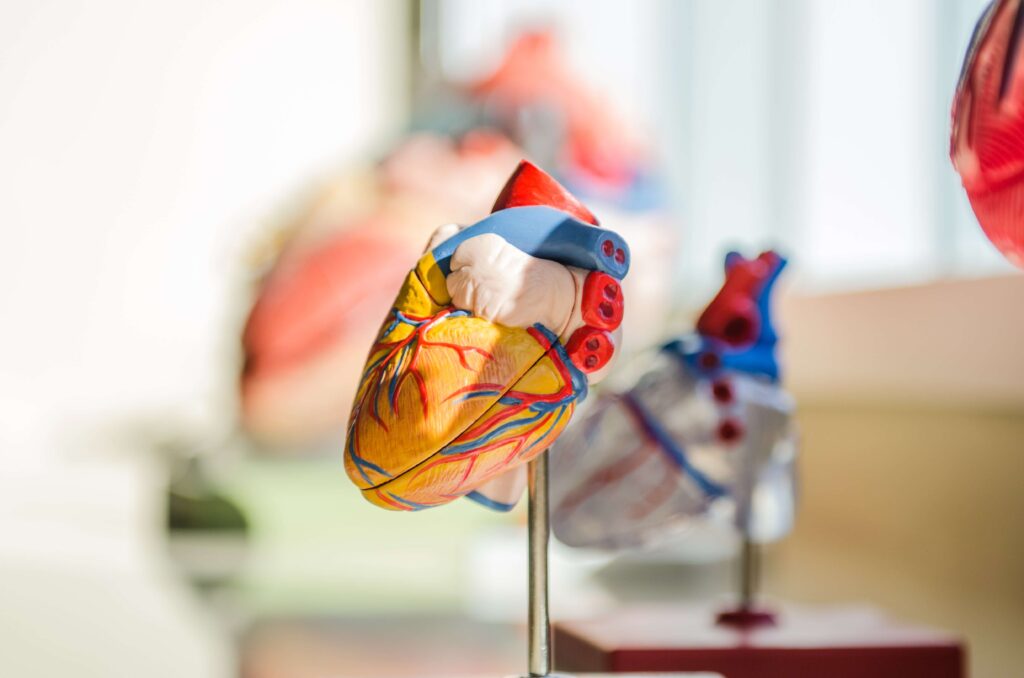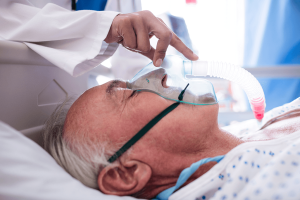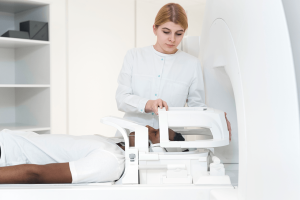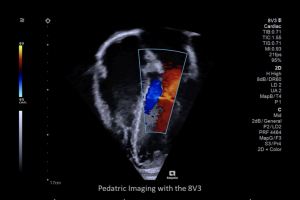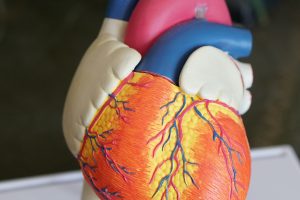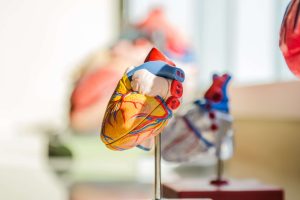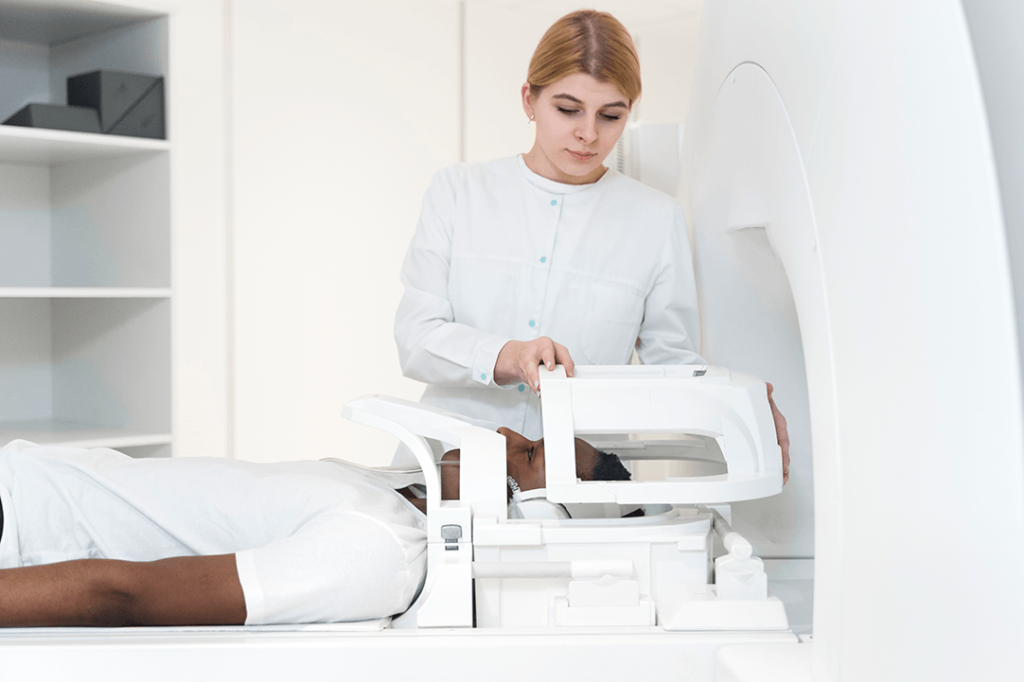The heart never takes a break. The heart is a strong muscle that never stops exercising, not for a minute. Every minute it needs blood, nourishment and oxygen. At Amarillo Heart Institute, we understand the importance of keeping your heart healthy and functioning at its best. We believe that a healthy heart is the foundation of a healthy life, and our goal is to provide you with all you need to achieve optimal heart health, a happier heart.
Aortic Aneurysm
An aortic aneurysm is a condition that involves the aorta, which is the largest artery in the body. It carries oxygen-rich blood from the heart to the rest of the body, and it extends from the heart down through the chest and into the abdomen.
When the walls of the aorta become weakened or damaged, they can bulge or balloon outwards, creating an aneurysm. This bulge can put pressure on surrounding organs or tissues, and it can also increase the risk of a life-threatening rupture.
Types of Aortic Aneurysm
Aortic aneurysms can be classified as either abdominal or thoracic, depending on where they occur.
- Abdominal aortic aneurysms (AAAs) develop in the part of the aorta that runs through the abdomen.
- Thoracic aortic aneurysms (TAAs) occur in the part of the aorta that runs through the chest.
Aortic Aneurysm symptoms
In many cases, aortic aneurysms do not cause any symptoms and are only discovered incidentally during imaging tests for other conditions. However, some people with aortic aneurysms may experience symptoms such as:
- Pain or discomfort in the chest, abdomen, or back
- Shortness of breath
- Hoarseness or difficulty speaking
- Coughing up blood
- Rapid or irregular heartbeat
- Sweating or clammy skin
- Loss of consciousness or fainting
If an aortic aneurysm ruptures, it can cause severe internal bleeding and can be life-threatening. Symptoms of a ruptured aneurysm may include sudden and severe pain in the chest or abdomen, lightheadedness, rapid heart rate, and low blood pressure.
Aortic Aneurysm risk factors
There are several risk factors that can increase the likelihood of developing an aortic aneurysm, including:
- Smoking: This is the most significant risk factor for aortic aneurysms, as it can weaken the walls of the blood vessels and increase the risk of atherosclerosis (a buildup of plaque in the arteries).
- Age: Aortic aneurysms are more common in older adults, particularly those over the age of 60.
- Gender: Men are more likely than women to develop aortic aneurysms.
- Family history: A history of aneurysms in close relatives can increase the risk of developing an aortic aneurysm.
- High blood pressure: This can put extra strain on the walls of the aorta and increase the risk of damage or weakening.
- Connective tissue disorders: Certain genetic conditions that affect the connective tissue in the body can increase the risk of aortic aneurysms.
How to diagnose Aortic AneurYsm
Aortic aneurysms can be diagnosed through various tests and imaging studies. The following are some of the common methods used for the diagnosis of aortic aneurysms:
Physical examination: Your doctor may perform a physical examination to check for signs of an aortic aneurysm, such as a pulsating mass in the abdomen, decreased blood flow to the legs, and a difference in blood pressure between the arms and legs.
Imaging tests: Imaging tests are often used to confirm the diagnosis of an aortic aneurysm and to determine its size and location. These tests may include:
Ultrasound: This test uses sound waves to create images of the aorta and can help to determine the size and shape of the aneurysm.
Computed tomography (CT) scan: A CT scan uses X-rays and computer technology to create detailed images of the aorta and surrounding structures.
Magnetic resonance imaging (MRI) scan: An MRI scan uses a magnetic field and radio waves to create detailed images of the aorta and surrounding structures.
Blood tests: Your doctor may order blood tests to check for signs of inflammation or infection, which can be a sign of aortic aneurysm.
Genetic testing: In some cases, genetic testing may be recommended to determine if there is a genetic predisposition to developing aortic aneurysms.
If an aortic aneurysm is suspected, it is important to seek prompt medical attention for diagnosis and treatment. Early detection and intervention can help to prevent complications and improve outcomes.
How to treat Aortic AneurYsm
The treatment for aortic aneurysm depends on various factors such as the size, location, and rate of growth of the aneurysm, as well as the overall health of the patient. The following are some common treatments for aortic aneurysm:
Observation: If the aneurysm is small and not causing any symptoms, the doctor may recommend observation or “watchful waiting” to monitor its growth with regular imaging tests such as ultrasound, CT, or MRI scans.
Medications: If the aneurysm is caused by high blood pressure or other underlying medical conditions, medications may be prescribed to manage those conditions and prevent the aneurysm from getting worse.
Surgery: Surgery may be necessary to repair or replace the damaged portion of the aorta in cases where the aneurysm is large, rapidly growing, or causing symptoms. The most common surgical procedures for aortic aneurysm are open surgery and endovascular repair.
Open surgery involves making a large incision in the chest or abdomen to access the aorta and repair or replace the damaged portion with a graft.
Endovascular repair is a minimally invasive procedure that involves inserting a catheter into the blood vessel through a small incision in the groin and using imaging guidance to guide a stent or graft to the site of the aneurysm to reinforce the weakened area.
Lifestyle changes: Patients with aortic aneurysm are often advised to make lifestyle changes such as quitting smoking, maintaining a healthy weight, exercising regularly, and managing high blood pressure and cholesterol levels to reduce the risk of complications.
It is important to seek prompt medical attention if you are diagnosed with an aortic aneurysm, as early detection and intervention can help to prevent complications and improve outcomes.

